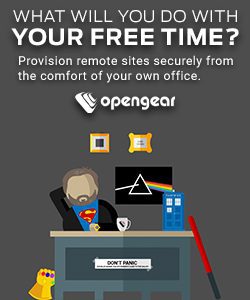Retailers are always looking to grow – this means growing their revenue, presence and overall brand. To ensure that this growth can occur, organizations are increasing spending to open brick and mortar stores. Aldi, Walmart and even Tiffany’s are spending billions of dollars to open new locations over the next few years and what does every store need1? A secure network – something that without the proper resources can become very costly and open the retailer to more vulnerabilities. Secure provisioning is a concept, where the IT infrastructure for a new site can be deployed using automation for the initial provisioning, configuration and re-configuration process. It helps to combat challenges during the provisioning process which include:
Complexity
When deploying an IT infrastructure for a new site, engineers can spend a lot of time configuring devices at the location. However, certain solutions allow them to easily do this for each new retail store. If you think about it, to reduce costs and get these sites running in a timely manner, retailers use a consistent layout for new stores – if you walk into a store in Kansas it most likely is going to look like one in Illinois. To reduce complexity, these organizations can use the same configuration for each site – this saves time and money during provisioning.
Security
Retailers can run into a variety of challenges when provisioning a network for a new store and when these go unresolved, they can create openings for attackers – enabling them to breach security infrastructure. Inventory of clothes, food and goods all play a large role in retail – that carries over to IT as well. If an organization doesn’t have an inventory of all IT assets during the initial provisioning of a site, they aren’t aware of points in need of updates. Security for retail environments also encompasses addressing possible security threats from insiders2. When provisioning a new network, a technician must be on site to rack and stack the equipment, creating the opportunity for a bad configuration or malware to be added. This can provide an attacker the ability to steal information including credit cards and social security numbers.
Costs
Most retailers want to expand their presence, meaning opening new stores – which may not be isolated to just one location. As these organizations grow their reach across the state or even the globe, costs increase. When provisioning a new retail site, without the right equipment to streamline the process, it can take a lot more time and money. Equipment would have to be shipped and the manual configuration process must be done by a highly skilled, and costly, technician.
Getting Retail Sites Running using Day One
 The NetOps Automation platform provides a centralized management solution for NetOps workflows. The need for human intervention is minimized at the core and the edge, because management is done from one central location. NetOps Secure Provisioning module, defines resources required to provision managed devices. It chooses how these resources will be distributed around a network.
The NetOps Automation platform provides a centralized management solution for NetOps workflows. The need for human intervention is minimized at the core and the edge, because management is done from one central location. NetOps Secure Provisioning module, defines resources required to provision managed devices. It chooses how these resources will be distributed around a network.
To begin the process, an OM2200 device is shipped to a new retail location and added to the rack by a technician. It calls home once the technician powers it on by using embedded cellular in the device. A TPM (Trusted Platform Module) in the appliance, ensures that authentication keys, configurations and firmware haven’t been tampered with. Lighthouse sends the configurations to the remote location where the device is and provisions the hardware. This provides zero touch provisioning to the network remotely.
Ensure that your organization is able to quickly scale to meet the demand of customers. To learn more about a smart solution that can provision your next retail site, please visit our NetOps Storygraphic.
1 https://www.cnbc.com/2018/12/04/walmart-target-investing-billions-of-dollars-in-their-stores.html
2 https://www.fortinet.com/blog/industry-trends/today-s-retail-network-and-security-requirements.html




